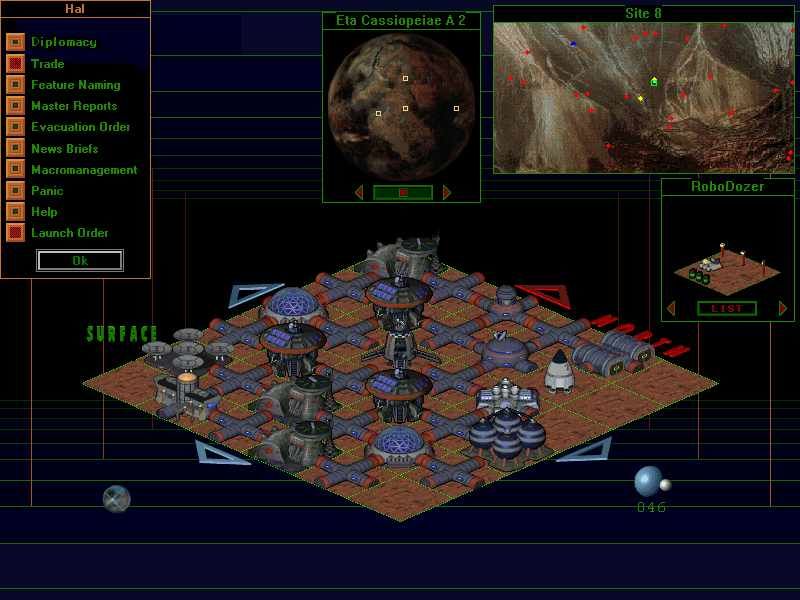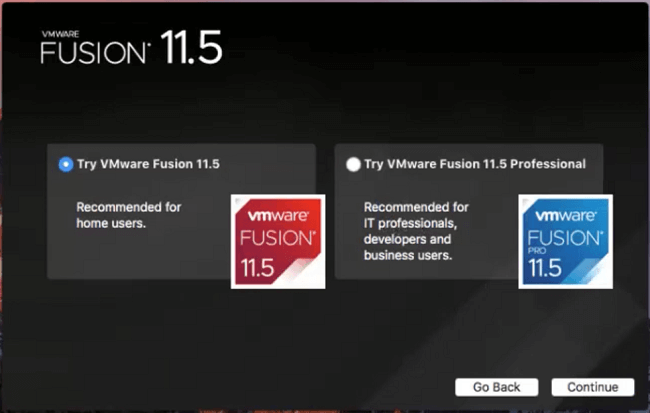Thanks to the change from PowerPC to Intel based PC, that you can have Mac as another PC. There are various benefits since Mac also started using Intel based processors. Of all the benefits, installing Windows on Mac OS is the best of all. But you might ask it is possible to install Windows 10 OS on a Macbook without erasing the original Mac OS? The answer is YES, Apple provides a custom-tailored solution to help you for this purpose: Boot Camp.
In fact, MS Windows OS still holds a prominent place in operating system, especially in businesses. In other words, there may be so many times when you need to run just one or two specific Windows Apps on a Mac, then you can consider to use CrossOver, which enables many Windows-based Apps to run on Mac or Linux operating systems without actually installing windows OS. If you need a more full-fledged, flexible Windows operating system on your Macbook, then you need to consider to create a Windows 10 bootbale USB drive and completely install Windows 10 on Mac computer. Though it's convenient but the machine speed will reduce for supporting both dual OS configuration.

But still if you are hell bent to experience the Duo, Windows and Mac together, the article will sufficiently guide you from making an Windows installation disk on Mac with or withoutt Boot camp Assistant.
Run Windows on your Mac using a virtual machine This is the simplest and most efficient way to run Windows on Mac. If you’re only installing Windows to get your office work done, or other light.
How to Install Windows 10 on Mac using Boot Camp
In fact, Installing Windows 10 on your Mac isn't as difficult as you might think, Boot Camp Assistant built in Mac OS which makes it easy to install Windows 10 OS on a Mac computer. With time, the program took a leap of upgrade, and not only it can run Windows softwares and also OS supporting all versions 7/ 8/ 10, alongside Windows games. But before you choose to use Boot camp for this specific purpose, you need to know that installing Windows on Mac would re-partition your Mac drive, because Windows OS will to take a lot of space. Now Storage availability on Mac is really expensive, and you might need to reboot your Mac every time you want to use Windows and while again switching back to Mac OS, so think before you go for it.
You need to prepare the following before starting to install Windows 10 OS on a Mac.
- 1) A working Mac computer you want to install Windows 10 on.
- 2) A USB drive with at least 10 GB space.
- 3) A second working windows computer.
- 4) Windows IOS file and a Windows 10 license key.
- 5) Boot Camp Assistant
Step 1 Get A Windows Disk Image
First, you need to prepare a Windows IOS files for creating a bootable USB.
- Go and download the Windows 10 IOS file from Microsoft website.
- Select edition menu and choose Windows 10, and click Confirm.
- Select an installation language and click Confirm.
- Select 64-bit or 32-bit Download and then click Save.
Step 2 Run Boot Camp Assistant on Your Mac
Copy the Windows 10 ISO file you just downloaded to your USB drive, then insert it to your Mac and open it, then move the ISO file to your Mac's desktop. Now launch the Boot Camp Assistant app on your Mac, it will guides you to install Windows OS on your Mac easily. Note, don't eject your USB, just keep it connected to your Mac for the rest of job.
To launch the Boot Camp Assistant on your Mac, go to Applications > Utilities folder. Find the Boot Camp and click it to run. Then click 'Choose' button to browse ISO file from your Mac's desktop.
Step 3 Create a partition for Windows On Your Mac
You will see the Boot Camp Assistant will walk you through partitioning, drivers and Windows support software. After the settings complete, your Mac will reboot and ask you where you want to install Windows OS.
Step 4 Install Windows 10 OS on Your Mac
Then when you are done with the Assistant, your Mac computer will restart and your will see the standard Windows installer like below. Fill the information box and connect next.
Windows setup will automatically finish the reset of setup process including the create an user account, this will take a few minutes. Windows will reboot normally and now you can login your Windows, then Boot camp installer will appear and require you to accept some terms. When the installer completes, click Finish to reboot your machine.
If you want to boot your Windows by default, then you set this in Boot camp control Panel in your Windows OS, you're allowed to select which default operating system your Mac boot from.
Then reboot your Mac and you will see a Windows 10 operating system, it's a real Windows 10 OS same as the one you've installed on your Windows computer. You'll see a complete set of buttons, similar to the Control Strip in macOS.

If you don't want to use the USB drive to accomplish the task of installing Windows 10 on Mac then you can do one thing, you can directly download the Windows 10 setup file on Mac desktop and then use the Boot camp utility to do the installation part as described above.
Installing Windows 10 on Mac is a marvelous idea to get both Windows and Mac experience at the same time in a single interface. You can choose to switch between both of them as per your requirement.But first you need to go thoroughly through the article before you can start installing it.
If you own Intel-based Macs, you can run OS X and Windows on one machine. In fact, it’s been possible to run Windows on a Mac for some time — with agonizing limitations. Near-extinct Mac models were loaded with Virtual PC emulation software could do Windows, too, but the program was painfully slow. Even if you find an old copy of the software, it won’t work with any current Macs.
Boot Camp software from Apple shook up the computing public upon its apocalyptic arrival in April 2006. Boot Camp graduated from beta, or near-finished, status with the arrival of Leopard. Boot Camp Assistant software is stored in the Utilities folder inside the Applications folder.
Boot Camp itself is free. You have to supply your own single-disc or downloadable full-install version of Windows; an upgrade disc won’t cut it.
It’s also important to note that you can use a 64-bit version of Windows, Windows 7 (Home Premium, Professional, or Ultimate), Windows 8, or Windows 8.1. Consult Apple support to see which Mac models are compatible with which versions of Windows. In its current incarnation, Boot Camp isn’t compatible with 32-bit versions of Windows.
Other requirements follow:
An Intel Mac with OS X version 10.6 or later
At least 2GB of RAM and 20GB of available space on the Mac’s storage drive that you want to donate to Windows
A blank CD or USB storage device that you’ll use for Windows software drivers
If you don’t run into snags, the entire installation should take about an hour.
Windows 8 and Windows 8.1 are optimized for a touchscreen environment, though you can use it with a standard mouse and keyboard. For now, Macs don’t support touchscreen computing.
To install Windows 8 via Boot Camp, you still must have a legitimate Windows 8 license from Microsoft and a Win8 installation disc, assuming that you have an optical drive. If you don’t have an optical drive, you may be able to create a Windows installer from an ISO file downloaded from Microsoft on a USB flash drive that’s 8GB or larger.
Because snags are possible, back up all your important information on the Mac’s startup disk.
Basic training
Following are the basic steps to get through Boot Camp:
Run Boot Camp Assistant (in the Utilities folder inside the Applications folder) to make sure that you have the latest firmware on your computer and to install any support software from Apple that you might need.
You’ll find any updates at Apple support. If you’re using a portable computer, make sure to connect the power adapter. You will also be given the option to create a Windows 7 (or later version) install disk for which you’ll need a USB flash drive and an ISO image downloaded from Apple.
Follow the prompts in Boot Camp Assistant to create a partition for Windows.
You’re essentially carving out an area of your hard drive for the Windows operating system,. This partition must be at least 30GB and can swell to the total free disk space on hand minus 30GB. If you don’t plan on doing much in Windows, keep the partition small.
Drag the divider to set the partitions for both OS X and Windows, or click Divide Equally to make equal partitions. You can’t resize a Windows partition after creating it, though you can replace it with a larger Windows partition.
If you have a Mac Pro with more than one internal hard drive, you can select which drive to partition. If any of this makes you nervous, know that you can remove the Windows partition later and go back to a single-partition Mac.
Insert the Windows CD or a USB flash drive with the Windows ISO file and then click Start Installation.
If you exited Boot Camp Assistant before installing Windows, open it again, choose Start the Windows Installer, and click Continue.
When you’re asked to choose the Windows partition, select the partition that says BOOTCAMP.
You may have to scroll down to see it.
Don’t erase any partitions that you see or create a new partition here. Failure to heed this warning could wipe out your entire Mac OS X startup disk.
(Optional) If you see a listing for Drive Options, click it; otherwise, proceed to Step 6.
Reformat the partition by using the Windows installer: Click Format.
You’re using the reliable and secure NTFS file system, but you won’t be able to save files to Windows from Mac OS X, at least not without a techie workaround.
Follow the onscreen instructions to finish installing Windows.
Boot Camp 5.1 includes several Mac drivers so that Windows will recognize your trackpad, Thunderbolt, USB 3.0, the iSight (or FaceTime) camera, the Eject key on the Mac keyboard, networking, audio, graphics, and so on.
A Boot Camp Control Panel for Windows and an Apple Boot Camp system-tray item will be added.
As with any new Windows computer, Microsoft requires that you activate your Windows software within 30 days.
Switching operating systems
You can go back and forth between OS X and Windows on your Mac, but you can’t run both operating systems simultaneously under Boot Camp. Instead, you have to boot one operating system or the other — thus, the name Boot Camp.
Restart your Mac, and hold down the Option key until icons for each operating system appear onscreen. Highlight Windows or Macintosh HD, and click the arrow to launch the operating system of choice for this session.
How To Run Windows Games On Mac Without Bootcamp
If you want OS X or Windows to boot every time, choose app → System Preferences, click Startup Disk, and choose the OS you want to launch by default.
How To Run Windows Games On Mac Without Bootcamp
You can perform the same function in Windows by clicking the Boot Camp system-tray icon and selecting the Boot Camp Control Panel. Click either the Macintosh HD or Windows icon, depending on your startup preference.